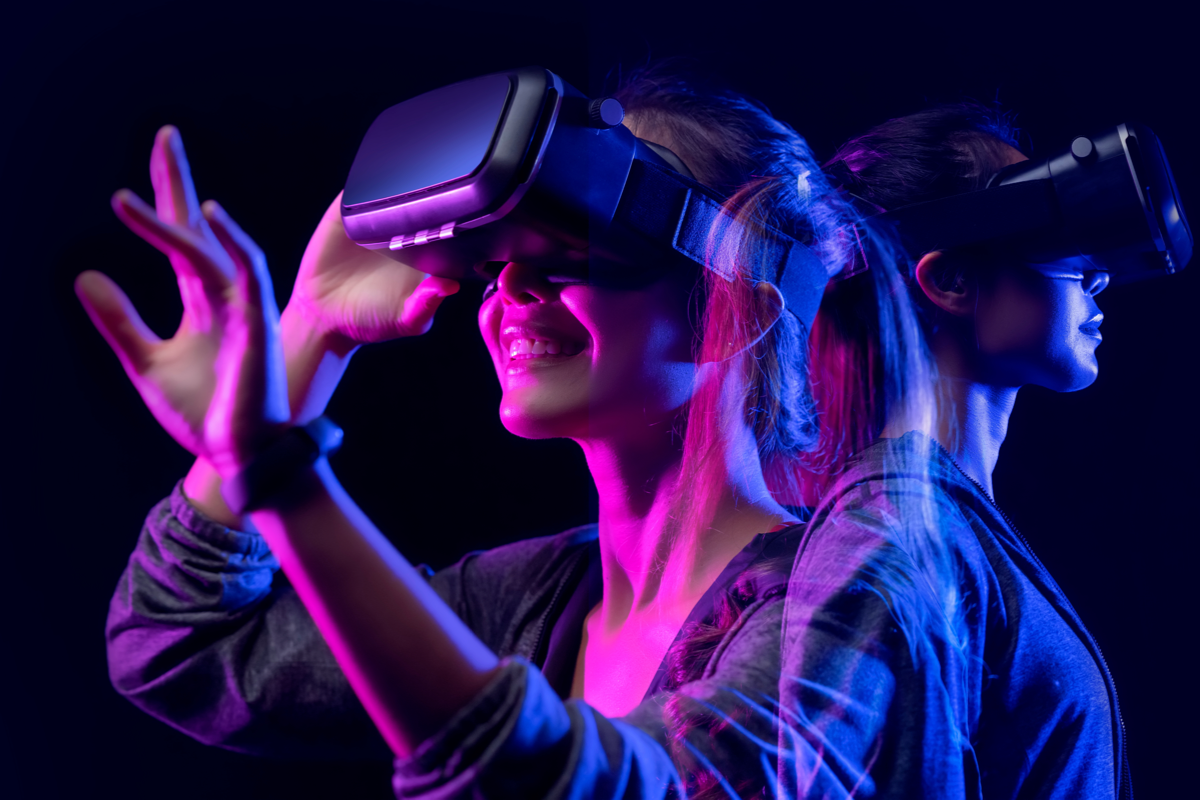What is a Metaverse?

What is the Metaverse? definition
There is currently no clear definition of the Metaverse. Rather, there are discussions about what the Metaverse could be, what it is not, what it should or must be and what belongs to it. If you ask Matthew Ball, whose Essays on the Metaverse made waves in 2020, the Metaverse is an “expansive network of persistent, real-time rendered 3D worlds and simulations that ensure continuity of identities , objects, history, currencies and permissions and can be experienced synchronously by an unlimited number of users in an individual way." (Source: www.matthewball.vc/all/forwardtothemetaverseprimer)
Although Big Tech CEOs like Mark Zuckerberg (Facebook), Satya Nadella (Microsoft) and Jen-Hsun Huang (Nvidia) are investing billions in it, the Metaverse is currently just a thought construct. Nevertheless, characteristics can be defined that distinguish it from the Internet and technologies such as Augmented Reality, Extended Reality and Virtual Reality. Matthew Ball emphasizes that it represents not just an evolution of the Internet, but a completely new form of computing. Digital spaces in the metaverse do not exist parallel to “reality”, but rather as a fusion of cyberspace, virtual reality and the physical world. Mark Zuckerberg calls it the “embodied internet,” which users don’t just look at on screens, but where they are. (Source: www.bbc.com/news/technology-57942909)
Features of the Metaverse
The following properties and characteristics of a metaverse can already be defined today:
- Real-time rendered, unbounded, persistent 3D spaces in which users move freely as avatars
- Collective 3D spaces where users explore, create, play, work, socialize and conduct business without being in the same physical space
- Companies do not “own” the Metaverse because it is a collectively shared technical infrastructure
- Virtual spaces across devices and systems can be created by users and made accessible to other users
- Extended and Mixed Reality technologies are used and enable interactions between digital and real spaces, e.g. B. VR glasses, digital assistants, smart/voice user interfaces (VUI), neural chips, machine learning, artificial intelligence and artificial neural networks
- Compatible virtual and real currencies form a unified economy for digital and physical spaces
- A totality of virtual and physical spaces requires compatible technical standards, protocols, interoperability, digital ownership, blockchain technologies and uniform legislation
Metaverse: Where does the idea come from?
For science fiction fans, technological innovations such as smartphones, smart glasses and iPods come as no surprise. Ray Bradbury already described wireless earpods and portable media players in his classic “Fahrenheit 451” (1953). Digital assistants like Alexa and artificial intelligences have already appeared in science fiction novels such as “2001: A Space Odyssey” (1968). Tablets, smartphones, video calls, robots – the world of the 21st century is populated with technologies that were previously just “pipe dreams” and fictions.
The same applies to the metaverse, which first appeared as a term in Neal Stephenson's 1992 novel "Snow Crash", but as an idea is much older. The fusion and interaction of reality with virtual 3D spaces can be found in the cyberpunk genre of the 1980s as well as in modern film interpretations such as “The Matrix” (1999) and “Ready Player One” (2018). But the Metaverse is not just fiction today. There have been practical examples of this for a long time.
Example 1: Second Life
Since 2003, the online 3D infrastructure Second Life has enabled users to move as an avatar in self-created virtual spaces, to make contacts, to conclude transactions, to play or to communicate. Second Life was developed as an open source platform by Linden Lab and had around one million users in 2013. SL is not an online game in the truest sense, as there is no “goal” and no definition of “winning” or “losing”. In addition, numerous companies such as Microsoft, Intel, IBM and Adidas operate “in-world” shops, which revealed new opportunities for virtual marketing. Now over 17 years old, Second Life is considered one of the earliest versions of a rudimentary, practical Metaverse.
Example 2: MMO – Massively Multiplayer Online
Massively multiplayer online games such as Fortnite, World of Warcraft (WoW), Minecraft, Roblox and Final Fantasy XIV are very popular. So-called MMOs are virtual persistent worlds that thousands of players use at the same time. MMOs can be divided into different concepts or genres. There are online role-playing games, strategy games and virtual battlefields. Users of games like WoW or Final Fantasy XIV move through thematically limited online worlds in skins or avatars, play globally with other participants at the same time, buy virtual items with real money and follow their own or predefined game campaigns.
In sandbox MMOS like Minecraft, Roblox and Animal Crossings, players can design virtual rooms relatively freely and interact with other players. Since MMOs are currently thematically limited and offer little overlap with physical spaces, the border to the Metaverse has not yet been crossed here. This could change if MMOs are networked and gamers can move freely between different MMO rooms with their avatars.
Metaverse and its importance for e-commerce
The Metaverse not only offers users new opportunities to experience virtual spaces. New e-commerce options are also opening up for companies. The Corona crisis showed how flexibly a networked world can react to limited contacts when social and business life shifts into the metaverse. The Metaverse opens up new marketing strategies, especially with regard to live analysis of user data, online shopping and cryptocurrencies such as Bitcoin. This includes opportunities to expand customer groups, create visibility for your own brand and interact with customers directly and worldwide.
Advertising and marketing campaigns will go far beyond targeted ads, keyword analysis, brand building and social media marketing if Social digital spaces are not just limited to apps, web addresses and interfaces such as smartphones and laptops. An example of this is concerts and events that have been moved to virtual stadiums and locations due to lockdowns. Further examples include digital counterparts of real locations and products that enable online viewings, fittings in virtual changing rooms or digital inspections (e.g. of used cars).
The Facebook Metaverse: Metaverse as a vision of the future
Facebook CEO Mark Zuckerberg is one of the strongest advocates and largest investors in the Metaverse. In 2021, he announced that he would transform Facebook into a metaverse company in the coming years. Facebook recently provided $50 million in funding as part of the XR Programs and Research Fund to advance research and development programs on the Metaverse within two years. This also includes studies on the potential of AR wearables such as the planned smart glasses from Facebook Reality Labs. According to Facebook, Metaverse is the new “computing platform”. For this reason, the online giant invests an estimated several billion dollars annually in the development of basic technologies.
Facebook's currently largest Metaverse project is called Horizon Workrooms and focuses on the “Metaverse for Work”. Currently available as a beta version of the Oculus app, Horizon Workrooms supports new forms of hybrid work models. Horizon users can actively collaborate with colleagues in other locations in the form of avatars in virtual conference rooms. Remote training programs, further training opportunities or customer advice should also be considered here. With an estimated three billion active users per month, Facebook is the largest social media company in the world. The “Metaverse for Work” is just a first step towards a world in which users interact, create, play and buy in the Metaverse without sharing a physical location.























